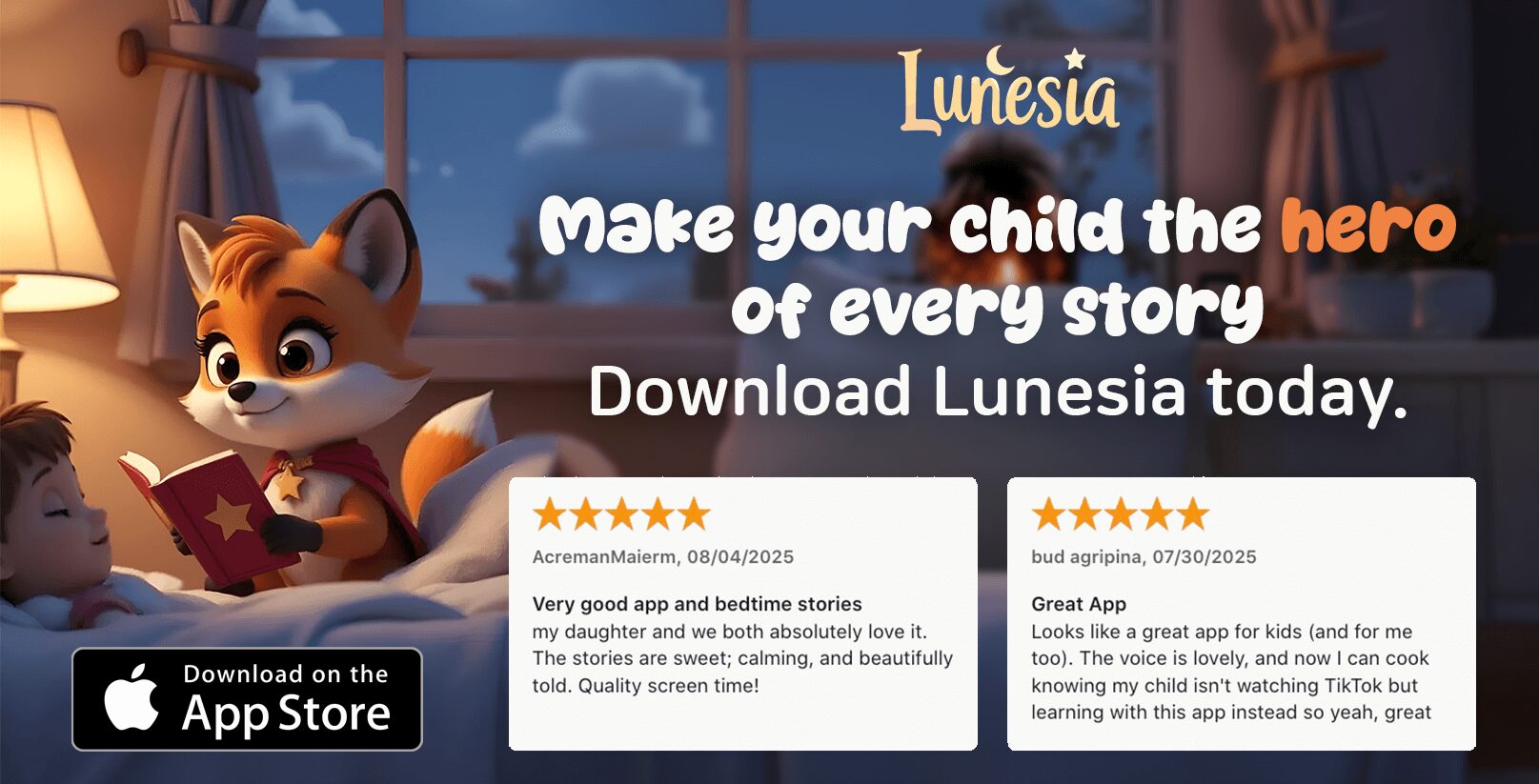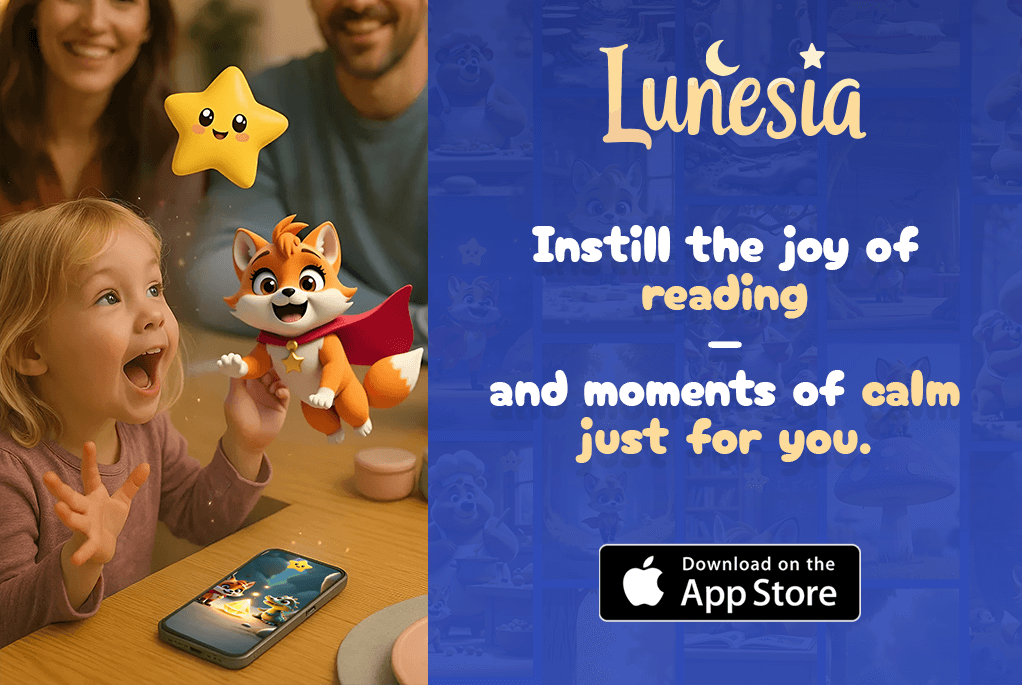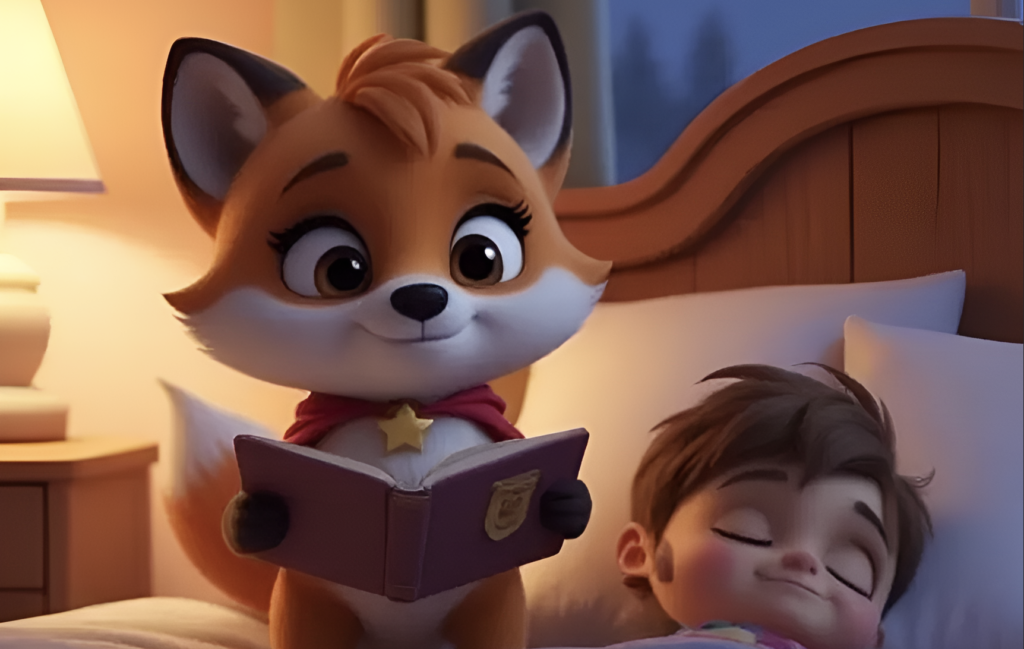As a parent, have you ever wished your child was the star of their favorite story? Imagine their excitement as they become part of a personalized short story, where they play a key role in shaping the narrative.
Platforms like “Put Me In The Story” and “Lunesia” offer unique approaches to personalization, allowing children to be part of a customized book. But how do they differ, and which one is right for your child?
In this guide, we’ll explore the differences between these platforms and help you understand how to create meaningful, personalized story experiences that resonate with your child.
Understanding Personalized Narratives
With the rise of personalized books, parents are discovering the profound impact that customized stories can have on their children’s lives. Personalized narratives offer a unique approach to storytelling, tailoring the story to the child’s name, appearance, and personal experiences. This customized approach not only captures a child’s imagination but also provides a sense of ownership and engagement that traditional stories often can’t match.
As we delve into the world of personalized narratives, it’s essential to understand what makes them special and how they contribute to a child’s development. Let’s explore the intricacies of customized storytelling and its benefits.
What Makes a Personalized Story Special
A personalized story becomes special when it incorporates elements that are unique to the child, making them the protagonist of their own adventure. This personal touch can significantly enhance a child’s emotional connection to the story, fostering a deeper love for reading. Personalized stories build confidence by positioning children as capable protagonists who overcome challenges, helping them visualize success in their own lives.
- These narratives provide safe spaces for children to process complex emotions and situations, giving them tools to understand and express feelings.
- Over time, children who regularly engage with personalized stories show improved language acquisition, with studies indicating vocabulary growth up to 30% faster than with standard books.
- There’s compelling reason to believe these stories enhance empathy, as children who see themselves helping others in narratives are more likely to demonstrate prosocial behaviors.
The Psychology Behind Customized Storytelling
The psychology behind customized storytelling reveals that personalized narratives can have a profound effect on a child’s psychological development. By seeing themselves as heroes in their own stories, children develop a stronger sense of self and a more positive self-image. This personalization can make the story more relatable and engaging, as it speaks directly to their experiences and emotions.
Moreover, the emotional connection formed through personalized storytelling can be a powerful tool in helping children navigate the challenges of growing up. As children progress through different stages of development, their stories can evolve, providing continuity and adapting to their changing needs and interests.
Benefits of Personalized Stories for Child Development
The benefits of personalized stories for child development are multifaceted. Not only do they enhance language skills and foster empathy, but they also play a significant role in building confidence and emotional intelligence. Unlike traditional novels or picture books, personalized stories can evolve as the child grows, creating a continuous reading journey that adapts to their developing interests and abilities.
As we consider the role of personalized narratives in child development, it becomes clear that these stories offer more than just entertainment; they provide a valuable tool for parents and educators to support children’s growth and learning over time, giving us a compelling reason to integrate them into their lives.
Put Me In The Story: Platform Overview
Discover how Put Me In The Story transforms reading into a personalized adventure for your child.
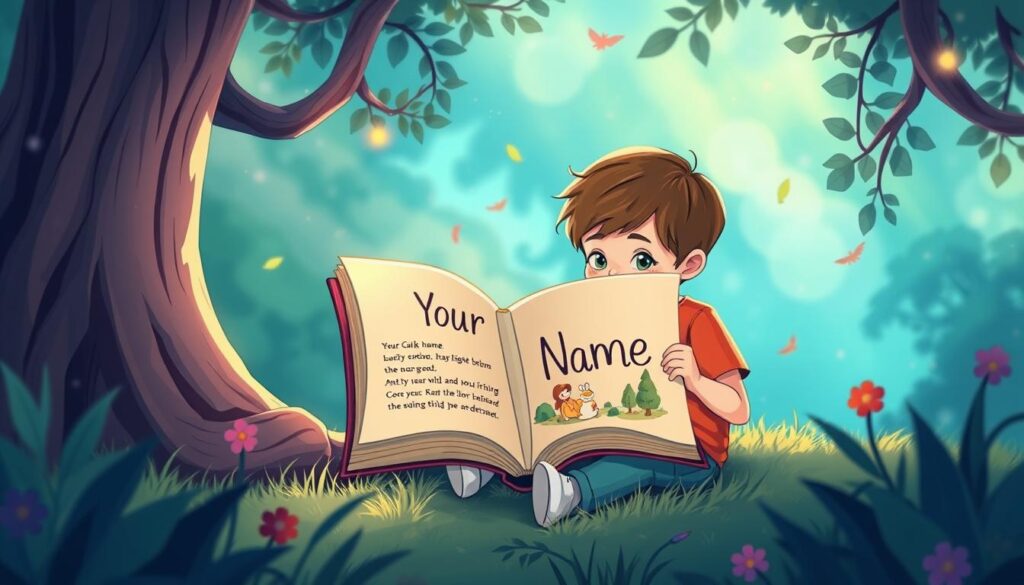
Put Me In The Story is a platform that allows you to create customized books where your child becomes the star. This personalized approach to storytelling not only makes reading more engaging but also helps in developing a deeper connection with your child through the narrative.
How Put Me In The Story Works
The process is straightforward and user-friendly. You start by selecting a book that you think your child will enjoy. Then, you input your child’s name and other personal details into the system. The platform integrates this information into the story, creating a unique narrative.
During the customization process, you have the option to add a personal message or dedication, making the book an even more special keepsake. This feature adds an emotional layer to the story, making it more than just a tale – it’s a personalized gift.
Available Book Options and Themes
Put Me In The Story offers a variety of book options and themes to cater to different tastes and age groups. From adventure stories to educational content, there’s something for every child. You can choose a story that aligns with your child’s interests or reading level, ensuring the narrative is both fun and appropriate.
The books are designed to be engaging, with illustrations and text that work together to captivate young readers. Some stories even offer additional pages where your child’s photo can be included, further personalizing the narrative.
Pricing and Customization Features
Pricing for Put Me In The Story books typically ranges from $29.99 to $39.99 for physical copies, with digital options available at lower prices. The space for customization is vast, allowing for a truly unique story. You can preview your customizations before finalizing your purchase, ensuring the final product meets your expectations.
Additional features include the ability to add a personalized dedication message, making the book a treasured possession. Shipping costs and production times vary based on location and customization complexity, with standard delivery in the United States taking 7-10 business days.
Lunesia: Platform Overview
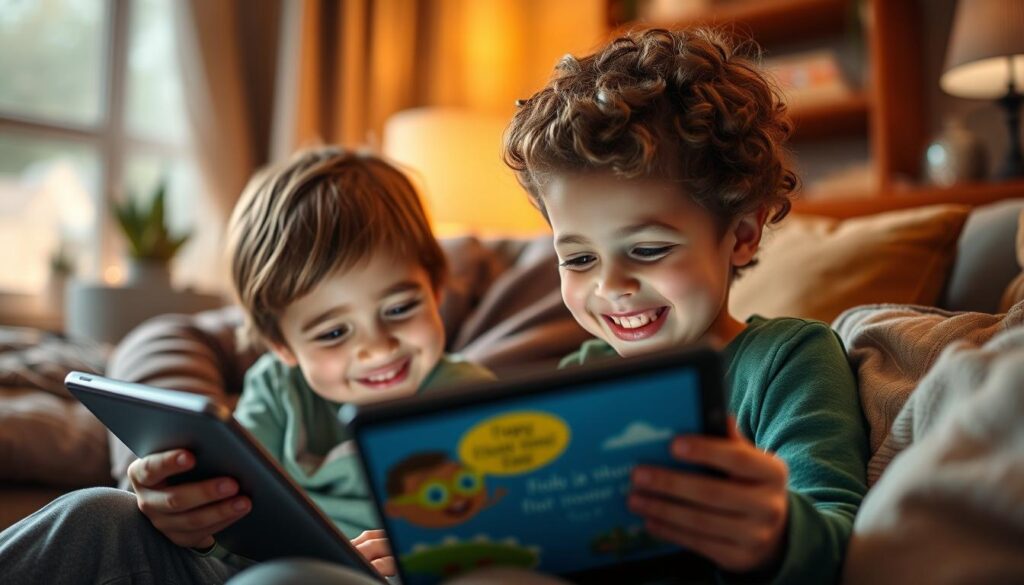
With Lunesia, you can create customized stories that captivate your child’s imagination. Lunesia’s personalized storytelling platform is designed to make storytelling a collaborative and engaging experience for both children and parents.
Narrative System Functions
Lunesia’s narrative system is built around a sophisticated algorithm that allows for the creation of unique stories based on user input. This system enables parents to craft stories that are not only personalized but also educational, making it a valuable tool for child development. One thing that sets Lunesia apart is its ability to save all created stories in a digital library, allowing for easy access at any time.
The platform includes features like voice recording options, enabling parents to narrate stories for times when they’re not physically present for bedtime reading. This feature adds a personal touch, making the storytelling experience even more special for the child.
Story Types and Customization Options
Lunesia offers a variety of story types and customization options to cater to different tastes and preferences. Whether you’re looking for adventure stories, educational content, or bedtime tales, Lunesia has a framework to suit your needs. You can customize character details, plot elements, and even incorporate personal speech patterns and phrases, making the story a reason for your child to feel connected to the narrative.
For educational purposes, Lunesia provides vocabulary-building tools that suggest age-appropriate words to enhance language development while maintaining narrative flow. This feature ensures that the story is not only fun but also enriching for your child.
Pricing and Additional Features
Lunesia operates on a subscription model, typically priced at $9.99 monthly or $99 annually, providing unlimited access to all story frameworks and creation tools. For an additional fee, you can print physical copies of the stories, ranging from $19.99 to $29.99 depending on the length and format. This flexibility allows you to choose how you want to enjoy the stories with your child, saving you time and effort.
One unique feature of Lunesia is its collaborative functionality, enabling multiple family members to contribute to stories regardless of physical distance. This makes it perfect for involving grandparents or traveling parents in the storytelling process.
Key Differences Between Put Me In The Story and Lunesia
A closer look at Put Me In The Story and Lunesia reveals several key differences that can significantly impact your child’s storytelling experience. As a parent, understanding these distinctions is crucial in making an informed decision that suits your child’s unique needs and preferences.
Narrative Control: Starring vs. Directing
One of the primary differences between the two platforms lies in how they approach narrative control. Put Me In The Story allows your child to become the star of their favorite stories, integrating their name, likeness, and personal details into established fiction narratives. This approach provides a familiar and comforting reading experience, as the storylines are already vetted by traditional publishers.
In contrast, Lunesia empowers children to take on a more directive role in storytelling. By offering a range of narrative frameworks and customization options, Lunesia enables kids to influence the direction of the story, fostering a more interactive and dynamic reading experience. This difference in narrative control can significantly impact how engaged your child is with the story.
Key differences in narrative control:
- Put Me In The Story: Stars in established fiction stories
- Lunesia: Directs the narrative through interactive storytelling
Customization Depth Comparison
Both platforms offer customization options, but they differ in depth and complexity. Put Me In The Story allows for personalization through the inclusion of your child’s name, appearance, and other personal details within a predefined story framework. This level of customization is particularly appealing for younger children who enjoy seeing themselves as part of their favorite tales.
Lunesia, on the other hand, provides a more extensive range of customization options, enabling children to influence not just their character’s details but also the plot progression and story elements. This deeper level of customization can be particularly beneficial for older children who enjoy more complex and dynamic storytelling.
For instance, Lunesia’s platform allows parents to adjust the complexity of the narrative based on their child’s age and reading level, making it a versatile tool for children aged 2 to 12 years.
Target Age Groups and Appropriateness
When it comes to target age groups, both platforms cater to young children, but their age ranges differ slightly. Put Me In The Story is designed primarily for children aged 2-8 years, focusing on early readers and those transitioning to independent reading. The content is carefully curated to be age-appropriate, leveraging established fiction to ensure familiarity and comfort.
Lunesia, however, offers a broader age range, with simplified frameworks suitable for preschoolers and more complex narrative options for kids up to 12 years old. This flexibility allows Lunesia to grow with your child, adapting to their evolving needs and reading skills.
Both platforms prioritize age-appropriateness, but their approaches differ. Put Me In The Story relies on the credibility of traditional publishers for its content, while Lunesia uses its customization options to tailor the narrative to the child’s age and maturity level.
Ultimately, the choice between Put Me In The Story and Lunesia will depend on your child’s age, reading level, and your personal preferences as a parent. By understanding these key differences, you can make an informed decision that best supports your child’s storytelling journey.
Creating a Put Me In The Story or Lunesia Narrative
The journey of creating a personalized narrative begins with understanding your goals and choosing the right platform. When you decide to create a customized story, you’re not just crafting a tale; you’re building a unique experience for your child. Both Put Me In The Story and Lunesia offer innovative approaches to personalized storytelling, but they cater to different needs and preferences.
Setting Your Storytelling Goals
Before diving into the creation process, it’s essential to define what you hope to achieve with your child’s personalized story. Are you looking to create a fun bedtime tale, or do you want to address specific issues like overcoming fears or building confidence? Identifying your goals will help you make informed decisions throughout the customization process.
Consider what themes or messages you want to convey through the narrative. Think about your child’s interests, personality traits, and any challenges they might be facing. This reflection will guide you in selecting the most appropriate platform and customization options.
Choosing the Right Platform for Your Needs
Both Put Me In The Story and Lunesia offer unique features that cater to different storytelling needs. Put Me In The Story allows you to star your child in an existing book, creating a fun and engaging experience. On the other hand, Lunesia provides a more comprehensive narrative system, allowing for deeper customization of characters and plot elements.
When deciding between the two platforms, consider the level of customization you desire and the type of world you want to create for your child’s story. Think about the age and preferences of your child, as well as any specific themes or elements you want to include.
Gathering Personal Details for Customization
To create a truly personalized narrative, you’ll need to gather various details about your child. For both platforms, start by collecting basic information like your child’s name, age, and physical characteristics. However, to create a richer story, consider gathering more detailed information.
- For both platforms, collect details about your child’s favorite activities, friends, and special interests to make the narrative more engaging.
- With Put Me In The Story, select high-quality photos that match the illustration style of your chosen book. Clear facial shots work best for seamless integration into the story world.
- For Lunesia narratives, go beyond basic details and consider your child’s personality traits, fears, dreams, and relationships. These elements can be woven throughout the story to create deeper resonance.
- Consider including supporting characters from your child’s real world, such as friends, siblings, or pets. These familiar elements create stronger connections between the narrative and daily life.
- The words you choose to describe your child in the customization process matter. Focus on positive attributes and capabilities rather than limitations, creating an empowering narrative that builds confidence.
By carefully gathering these details and choosing the right platform, you can create a personalized narrative that not only delights your child but also provides a meaningful and engaging experience.
Step-by-Step Guide to Creating a Put Me In The Story Book
Imagine your child’s name in the pages of their favorite story – Put Me In The Story makes this a reality. Creating a personalized book is a straightforward process that involves a few simple steps.
Selecting the Perfect Book Template
The first step in creating your Put Me In The Story book is choosing the right template. With a variety of themes and stories available, you can select the one that best suits your child’s interests. Take your time to browse through the options and read the descriptions to find the perfect fit.
Consider what type of story your child enjoys most. Is it an adventure, a fairy tale, or perhaps a story about friendship? Put Me In The Story offers a range of genres to cater to different tastes. Once you’ve found a story you like, you can begin the customization process.
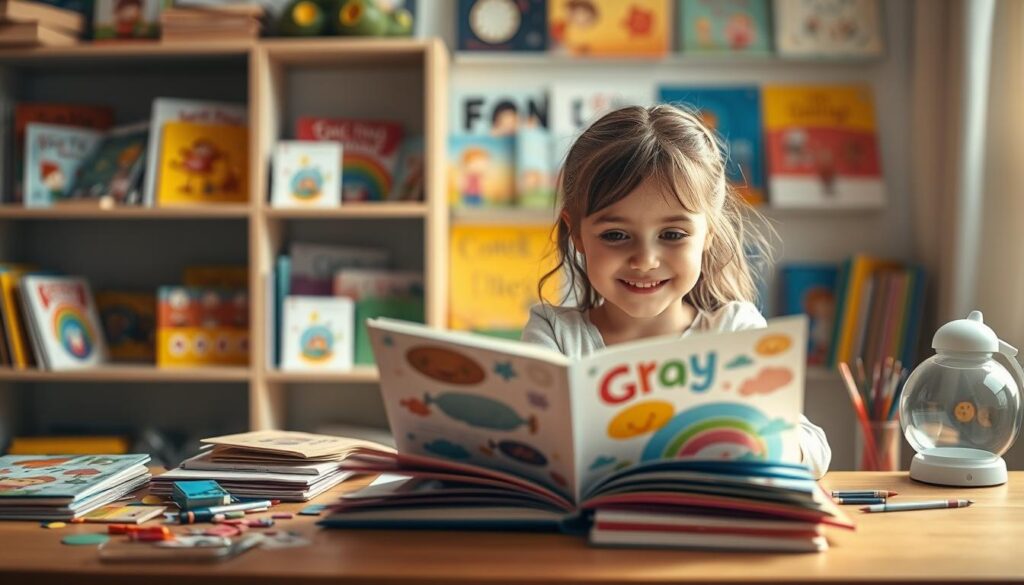
Adding Personal Details and Photos
Personalization is at the heart of Put Me In The Story. You’ll be asked to provide details about your child, such as their name, interests, and sometimes even their appearance. This information is used to weave your child into the narrative, making them a part of the story. It’s one thing to read a story; it’s another to be the star of it!
You’ll also have the option to include photos. This adds a visual element to the story, making it even more engaging for your child. Ensure the photos are clear and recent to get the best results.
Reviewing and Finalizing Your Book
Once you’ve added all the personal details and photos, it’s time to review your book. Take your time to go through the digital preview carefully. Check for any errors in the personal details or photo placement. At the end of the review process, you’ll have options for quantity and shipping speed.
- Take your time to thoroughly review the digital preview of your customized book.
- Pay special attention to how names appear throughout the text.
- Consider the physical specifications of your final product.
- At the end of the review process, you’ll have options for quantity and shipping speed.
- There’s good reason to save your customization details in your account for future use.
By following these steps, you’ll have a beautifully personalized book that your child will treasure. The process is designed to be enjoyable and straightforward, allowing you to create a unique story that will captivate your child’s imagination.
Step-by-Step Guide to Creating a Lunesia Narrative
Imagine being able to create your own short stories with your child as the hero – Lunesia makes this possible. Creating a personalized narrative with Lunesia is a straightforward process that allows you to craft engaging stories tailored to your child’s interests and reading level.
Choosing Your Narrative Framework
The first step in creating a Lunesia narrative is selecting the right framework for your story. Lunesia offers various templates and themes to choose from, ensuring that you can find the perfect starting point for your narrative. When choosing your framework, consider your child’s age, interests, and reading level to ensure the story is engaging and appropriate.
You can browse through Lunesia’s library of story starters, which include popular themes such as adventure, friendship, and overcoming challenges. Each theme is designed to be flexible, allowing you to customize the narrative to fit your child’s personality and your storytelling goals.
Customizing Character Details and Plot Elements
Once you’ve chosen your narrative framework, it’s time to customize the character details and plot elements. Lunesia’s platform allows you to personalize various aspects of the story, including the main character’s name, appearance, and traits. You can also modify the plot to include specific events, challenges, or themes that are relevant to your child’s life.
This customization process not only makes the story more engaging for your child but also helps to create a narrative that is meaningful and relevant to their experiences. By incorporating personal details and photos, you can make the story feel more authentic and immersive.
For instance, you can add your child’s name and likeness to the main character, making them the star of the story. You can also include personal anecdotes or inside jokes to make the narrative more relatable and fun.
Finalizing and Sharing Your Story
After customizing your narrative, it’s time to finalize and share your story. Lunesia offers several options for finalizing your creation, including digital-only formats and printed books with various cover and illustration options.
- Once your narrative is complete, you can choose to save multiple versions of your story, creating opportunities to revisit and revise the narrative over time as your child grows or their interests evolve.
- Unlike traditional short stories with fixed endings, Lunesia stories can remain open-ended, allowing you to add new chapters or create sequels that build on the original narrative.
- The sharing features enable you to send digital versions to family members, create collaborative stories with distant relatives, or compile multiple stories into collections organized by theme or time period.
- For printed versions, you can customize the layout, font size, and number of illustrations per page, creating a physical book that matches your child’s reading preferences and abilities.
| Feature | Digital Version | Printed Book |
|---|---|---|
| Customization Options | Various font sizes and layouts | Customizable cover and illustration options |
| Sharing Capabilities | Easy to share via email or digital platforms | Can be gifted or shared in person |
| Storage and Accessibility | Stored digitally, accessible on various devices | Physical copy, can be stored on bookshelves |
By following these steps, you can create a unique and engaging narrative with Lunesia that your child will cherish. Whether you choose a digital or printed format, your personalized story is sure to become a favorite.
World-Building Techniques for Enhanced Personalization
Crafting a world that resonates with your child is key to making personalized stories truly special. When you create a narrative that feels tailored to their interests and experiences, you’re not just telling a story – you’re building a connection. Effective world-building is at the heart of this process, allowing you to craft immersive environments that captivate your child’s imagination and draw them into the story.
Creating Immersive Settings That Resonate
The setting of your story is more than just a backdrop; it’s a living, breathing entity that can transport your child to new and exciting realms. To create an immersive setting, you need to think about the details that will resonate with your child. What’s their favorite place? Is it a magical forest, a bustling city, or a cozy little cottage? By incorporating elements that are meaningful to your child, you can create a world that feels personalized and engaging.
Consider, for instance, the sensory aspects of the environment. What does the world look like? Are there unique creatures or characters that inhabit it? How do these elements interact with your child as the protagonist? The more vivid and detailed your world-building is, the more likely your child is to become fully engaged in the story. This is one effective way to make the narrative more memorable.
Balancing Fantasy and Reality in Personalized Stories
One of the challenges of world-building is striking the right balance between fantasy and reality. On one hand, you want to create a world that’s imaginative and exciting; on the other, you need to ensure it’s grounded enough for your child to relate to. This balance is crucial because it allows your child to connect the story to their own experiences, making it more impactful. A good rule of thumb is to start with elements that are familiar to your child and then gradually introduce fantastical elements. This form of storytelling can help your child navigate between the real and imaginary worlds.
For example, if your child loves animals, you could create a story set in a fantastical world where animals can talk. By making the fantastical elements relatable and connected to your child’s interests, you can create a narrative that’s both engaging and meaningful. This approach helps children understand complex concepts by relating them to a thing they already know and love.
Adding Sensory Details for Deeper Engagement
Sensory-rich descriptions are a powerful tool in world-building, creating neural pathways in a child’s head that make the story more memorable. By incorporating details about how things feel, smell, sound, and taste, you can help your child fully immerse themselves in the narrative world. The key is to consider your child’s sensory preferences when crafting these descriptions. Some children respond strongly to visual imagery, while others connect more deeply with sounds or tactile descriptions.
- Sensory details help children visualize and engage with the story on a deeper level.
- Incorporating sensory elements can make the narrative more vivid and memorable.
- By tailoring sensory descriptions to your child’s preferences, you can enhance their engagement and enjoyment of the story.
The most effective way to incorporate sensory details is to connect them to emotions, helping children understand how characters feel through physical sensations they can recognize. This form of immersive storytelling not only enhances engagement but also helps develop children’s own descriptive vocabulary and awareness of their sensory experiences.
Character Development in Personalized Narratives
Character development is at the heart of creating immersive and meaningful personalized narratives. When we craft stories with well-developed characters, we not only captivate our young readers but also help them grow emotionally and psychologically.
Making Characters Relatable Yet Aspirational
Creating characters that are both relatable and aspirational is a delicate balance. You want your child to see themselves in the protagonist, yet also look up to them as a role model. To achieve this, consider incorporating traits that your child admires or aspires to have. For instance, if your child loves their family dog, you could include a loyal canine companion in the story, making the narrative more engaging and personal.
Relatable characters help children connect with the story on a deeper level. By making the protagonist face challenges that your child might encounter, you create a narrative that resonates with their experiences. At the same time, aspirational elements inspire children to grow and develop positive qualities.
Incorporating Personal Traits Authentically
When developing characters in personalized short stories, it’s essential to incorporate personal traits authentically. This involves understanding your child’s personality, strengths, and weaknesses, and reflecting these in the narrative. By doing so, you make the story more engaging and meaningful to your child.
For example, if your child is brave and adventurous, the protagonist could embody these traits while navigating through the story’s world. Authentic incorporation of personal traits helps in creating a narrative that feels tailored to your child, enhancing their emotional investment in the story.
Creating Supporting Characters That Enhance the Story
Supporting characters play a crucial role in enriching the narrative and providing depth to the story. In personalized narratives, these characters can reflect real-world relationships or introduce new elements that complement the protagonist’s journey.
- Consider including versions of important people in your child’s life, such as friends, siblings, or teachers, as supporting characters.
- Fantastical characters can represent different aspects of your child’s personality or challenges they face, adding a layer of depth to the story.
- Animal characters, like a beloved family dog, can provide emotional support and introduce elements of fantasy in a relatable way.
- The most effective supporting characters complement the protagonist, offering guidance, friendship, or challenges that move the story forward.
By thoughtfully developing characters in personalized narratives, you create a rich and immersive world that captivates your child and supports their emotional and psychological growth.
Crafting Meaningful Dialogue in Custom Stories
Crafting meaningful dialogue in custom stories is an art that requires a deep understanding of the child’s voice and perspective. When creating a personalized short story, the dialogue should not only be engaging but also reflective of the child’s personality and speech patterns.
To achieve this, it’s essential to consider the child’s age, reading level, and individual characteristics. This helps in crafting dialogue that is both authentic and captivating. Let’s explore some key aspects of writing effective dialogue in personalized stories.
Writing Age-Appropriate Conversations
Writing age-appropriate conversations is crucial in a personalized story. The dialogue should be simple and easy to understand for younger children, while older children can engage with more complex conversations. For instance, younger children might enjoy stories with simple, direct dialogue, whereas older children can appreciate more nuanced and layered conversations.
Consider the following tips when writing dialogue for your child’s story:
- The dialogue should reflect the child’s voice and personality.
- Use simple language for younger children and more complex language for older children.
- Ensure the dialogue is engaging and advances the plot.
Incorporating Personal Speech Patterns and Phrases
Incorporating personal speech patterns and phrases into the dialogue makes the story even more special and personalized. Using the child’s favorite expressions or mannerisms can make the characters feel more real and relatable. For example, if a child has a particular way of saying certain words or phrases, incorporating these into the dialogue can add a touching personal touch.
To effectively incorporate personal speech patterns, you can:
- Observe and note your child’s unique expressions and phrases.
- Use these observations to create authentic dialogue.
- Ensure the dialogue flows naturally and doesn’t feel forced.
Balancing Dialogue and Narration
Balancing dialogue and narration is key to maintaining the right time and pacing in your story. Too much dialogue can make the story feel rushed, while too much narration can slow it down. The ideal balance depends on the child’s age and reading preferences. For younger children, more dialogue can be engaging, while older children might appreciate a mix of both dialogue and narration.
To achieve a good balance, consider:
- The child’s attention span and reading level.
- The story’s pacing and how dialogue and narration contribute to it.
- The overall flow of the story, ensuring it remains engaging throughout.
By carefully crafting dialogue and balancing it with narration, you can create a compelling and personalized short story that resonates with your child. Remember, the goal is to make the story feel special and meaningful, so don’t be afraid to experiment and adjust the dialogue and narration to suit your child’s unique needs and preferences over time.
Adding Educational Elements to Personalized Stories
As we explore the world of personalized storytelling, it’s essential to consider how educational content can be seamlessly integrated. Personalized stories have the potential to transform learning into an engaging and interactive experience for children.
Incorporating Learning Objectives
Incorporating learning objectives into personalized narratives requires a thoughtful approach. The goal is to make learning fun without making it feel like a traditional lesson. By weaving educational content into the fabric of the story, parents can create an immersive learning experience that captivates their child’s imagination.
For instance, if a child is fascinated by dinosaurs, a personalized story can be crafted to include facts about different species, their habitats, and their characteristics. This not only teaches the child about paleontology but also does so in an engaging narrative that feels like an adventure.
- Leverage your child’s interests to make learning more appealing.
- Use short stories as an ideal form for educational content, focusing on specific concepts without overwhelming young learners.
- Incorporate humor to make educational content more memorable and enjoyable.
Customizing Educational Content
Customizing educational content to a child’s level is crucial for effective learning. The narrative should be tailored to the child’s age and developmental stage, ensuring that the educational elements are neither too simplistic nor too complex.
For example, for younger children, simple stories with basic educational content such as alphabet recognition or counting can be created. For older children, more complex themes like fractions or basic science concepts can be incorporated into the narrative.
By adjusting the educational content to suit the child’s needs, parents can create a personalized learning journey that is both challenging and enjoyable.
Making Learning Fun
Making learning fun is at the heart of creating effective educational personalized stories. When children are engaged in a narrative that is both entertaining and educational, they are more likely to retain the information and develop a love for learning.
The most effective educational personalized stories don’t feel like learning at all—they feel like adventures where knowledge becomes a superpower that helps the child-character succeed. By using relatable characters and exciting plotlines, parents can create a captivating educational experience that their child will look forward to.
In conclusion, adding educational elements to personalized stories can significantly enhance a child’s learning experience. By incorporating learning objectives naturally, customizing educational content, and making learning fun, parents can create a rich and engaging educational journey for their children.
Using Personalized Stories to Address Emotional Challenges
Emotional challenges are a natural part of growing up, and personalized stories can offer support. As a parent, there’s nothing more important than helping your child navigate the ups and downs of life. One effective way to do this is by using customized narratives that address their specific emotional needs.
Personalized stories can be a powerful tool in helping children build confidence, overcome fears, and cope with significant life changes. By incorporating elements that are relevant to your child’s experience, you can create a narrative that resonates with them on a deeper level.

Building Confidence and Self-Esteem
Stories that feature characters overcoming challenges can be particularly effective in helping children build confidence and self-esteem. By seeing themselves as the protagonist in the story, children can develop a sense of empowerment and self-worth. For instance, a story about a character who learns to ride a bike can help a child feel more confident about their own abilities.
When creating a story for building confidence, it’s essential to incorporate elements that celebrate your child’s strengths and accomplishments. This can be done by including personal details and achievements in the narrative, making it even more relatable and inspiring.
Addressing Fears and Anxieties
Fears and anxieties are common in childhood, and personalized stories can be a gentle way to address these concerns. By creating a narrative that acknowledges and validates your child’s fears, you can help them feel more comfortable and secure. For example, a story about a character who overcomes a fear of the dark can help a child feel more at ease in their own bed.
The key to addressing fears and anxieties through narrative is to create a story that is both reassuring and realistic. By using a character that your child can relate to, you can help them work through their emotions in a safe and supportive environment. Over time, this can lead to a significant reduction in anxiety and fear.
Creating Stories for Major Life Transitions
Major life transitions, such as moving homes or starting school, can be challenging for children. Personalized stories can help ease these transitions by allowing children to process changes through narrative before, during, and after significant events in their lives. By creating a story that acknowledges both the challenges and opportunities of change, you can help your child feel more prepared and confident.
- Consider creating transition stories for experiences like moving homes, starting school, welcoming siblings, or family restructuring.
- These stories work best when they incorporate specific details about the upcoming transition, creating a bridge between the known present and unknown future.
- Over time, transition stories can become cherished keepsakes that document important moments in children’s lives.
By using personalized stories to address emotional challenges, you can provide your child with a valuable tool for navigating life’s ups and downs. With a customized narrative, your child can develop the confidence, resilience, and emotional intelligence they need to thrive. Every story is a unique opportunity to make a positive impact on your child’s life, and with the right approach, you can create a truly lasting and meaningful story.
Tips for Reading Personalized Stories Together
Personalized stories offer a special opportunity to bond with your child, and with the right approach, you can make the experience even more meaningful. Reading together can become a cherished ritual that fosters connection, creativity, and a love for stories. Here are some tips to enhance your shared reading experience.
Creating Special Reading Rituals
Establishing a special reading ritual can make story time even more enjoyable and create lasting memories. Consider setting aside a dedicated time and place for reading, free from distractions, where you and your child can snuggle up and immerse yourselves in the story. You might also develop a pre-reading routine, such as making a cup of tea or having a favorite snack, to signal that it’s story time.
To make the experience even more special, you could:
- Create a cozy reading nook with pillows, blankets, and good lighting.
- Use a special reading lamp or candle to create a warm ambiance.
- Make reading a regular part of your daily or weekly routine, so your child knows what to expect.
Engaging Questions to Ask During Story Time
Engaging your child during story time can enhance their understanding and enjoyment of the narrative. Asking open-ended questions encourages them to think critically about the story and its characters. You might ask questions like:
- What do you think the main character will do next?
- How do you think the character is feeling in this scene?
- What would you do if you were in the character’s shoes?
These questions can spark interesting discussions and help your child develop their analytical skills. Remember to listen to their responses and use them as a springboard for further conversation.
Extending the Story Experience Beyond Reading
The impact of personalized short stories extends far beyond reading time when you intentionally connect narrative elements to real-world experiences. Consider creating crafts, activities, or outings inspired by story elements—visiting locations similar to those in the book, creating artwork based on the narrative, or role-playing scenarios from the story. These extensions help bridge the gap between the story world and real life, reinforcing positive messages and helping children apply narrative lessons to their own experiences.
Some ideas for extending the story experience include:
- Creating a diorama or model of a key setting from the story.
- Writing a sequel or alternative ending to the story together.
- Acting out a favorite scene or character.
By extending the story experience, you can turn reading into a launching point for creativity, conversation, and real-world exploration, making the story even more meaningful and memorable for your child.
Advanced Customization Techniques
Advanced customization techniques can elevate the art of personalized storytelling. By going beyond the basic personalization options, you can create a narrative that is even more engaging and meaningful for your child. In this section, we’ll explore some advanced techniques to enhance your child’s storytelling experience.
Enhancing Personalization Beyond the Basics
To create a truly immersive experience, you need to consider how to make the story even more personal and relevant to your child’s life. This can involve incorporating elements that are unique to your child’s interests, hobbies, or experiences. For instance, you can use Lunesia’s advanced customization features to add personal details that make the story more relatable and engaging.
- Use specific names, places, and events that are significant to your child.
- Incorporate your child’s favorite hobbies or activities into the story.
- Create characters that resemble your child or their friends.
By doing so, you can make the story more appealing and interactive, thus enhancing your child’s engagement with the narrative.
Adding Personal Touches and Inside Jokes
One of the most effective ways to make a story special is by adding personal touches and inside jokes that are unique to your relationship with your child. This can include references to funny moments you’ve shared or special traditions that are meaningful to your family. Such elements not only make the story more enjoyable but also create a sense of connection between you and your child.

For example, you can include a character that has a catchphrase or a habit that your child finds amusing. This will make the story feel more personalized and tailored to your child’s tastes.
Creating a Series of Connected Narratives
Connected personalized short stories can create a richer narrative experience than standalone tales. By developing a series of stories that are linked by common characters or themes, you can allow for deeper character development and more complex themes over time. Consider how your characters might grow across the series, facing increasingly complex challenges that mirror your child’s own developmental journey.
- Plan a narrative arc that spans multiple stories.
- Maintain consistent characters and settings while introducing new elements.
- Use each installment to build upon the previous one, creating a larger narrative.
This approach not only keeps the stories fresh and engaging but also creates a personalized literary universe that can expand over years, growing with your child and adapting to their changing interests and abilities.
Real Success Stories: Transformative Personalized Narratives
Through personalized stories, families have discovered a powerful tool for growth and connection. The impact of these customized narratives is evident in the numerous success stories from families around the world.
Overcoming Challenges with Custom Stories
Many children have overcome significant challenges with the help of personalized stories. These narratives provide a safe space for children to confront and understand their fears and anxieties.
- Personalized stories help children develop coping mechanisms and build resilience.
- By incorporating a child’s name and experiences into the narrative, these stories create a sense of ownership and relevance.
- Families report that their children feel more connected to the story and its message.
For instance, a child struggling with anxiety might find solace in a story where the main character faces similar challenges. As the story unfolds, the child sees the character overcome their fears, which can be incredibly empowering.
Parent Testimonials and Experiences
Parents who have used personalized storytelling services often share heartfelt testimonials about the positive impact on their families. One parent noted, “The personalized story helped my child feel seen and understood in a way that traditional stories couldn’t.”
“The story was so engaging and meaningful to my child. It was amazing to see how it helped them process their emotions and develop a more positive outlook.”
These testimonials highlight the emotional connection that personalized stories can foster between children and their families.
Long-Term Benefits Observed by Families
Families who incorporate personalized short stories into their regular routines report significant long-term benefits. These benefits extend far beyond the immediate reading experience, influencing various aspects of a child’s development.
- Children develop stronger literacy skills as they engage with the stories.
- Emotional intelligence is enhanced through the exploration of characters’ feelings and experiences.
- Creative thinking is encouraged as children begin to create their own narratives.
Over the years, parents observe their children growing more confident and resilient, with a deeper understanding of themselves and the world around them.
Conclusion: Choosing Your Personalized Storytelling Journey
As we conclude our exploration of personalized storytelling, it’s clear that both Put Me In The Story and Lunesia offer unique approaches to making your child the star of their own narrative. The choice between these platforms ultimately depends on your family’s unique needs and preferences.
Consider your available time commitment when deciding between the two. Put Me In The Story offers a streamlined, professional product that requires minimal effort, while Lunesia rewards a greater investment of time with deeper customization possibilities. This difference can significantly impact the way you engage with personalized storytelling.
Both platforms provide valuable alternatives to traditional novels and short stories, creating reading experiences that center your child in ways conventional literature cannot. You might find that one platform suits your needs better than the other, or you might discover that combining both approaches works best for your family.
Many families have found success in using Put Me In The Story for immediate gratification and professional quality, while developing ongoing Lunesia narratives that evolve over time. This hybrid approach allows you to leverage the strengths of both platforms, creating a rich and varied reading experience for your child.
Whichever path you choose, personalized storytelling offers a powerful way to strengthen family bonds, address developmental challenges, and nurture a lifelong love of reading. This journey can be a transformative course that benefits your child throughout their life.
Remember, there’s no single “right” approach to personalized storytelling. The best choice is the one that resonates with your child and fits naturally into your family’s reading routines. As your child grows, their preferences and needs will evolve, making it worthwhile to revisit both platforms periodically to discover new options that match their current developmental stage.
The investment you make in personalized storytelling today creates memories and reading habits that will influence your child’s relationship with books for years to come. Consider starting your journey with a single personalized book or story, observing your child’s response before expanding into more extensive personalization options.
The most successful personalized storytelling experiences grow organically from a child’s interests and needs rather than being imposed. By following your child’s lead, you’ll discover the approach that works best for your unique family, making the most of your time and creating a rewarding experience.
In the end, the way you choose to engage with personalized storytelling will be a personal decision, influenced by your family’s circumstances and goals. Whether you opt for the convenience of Put Me In The Story or the depth of Lunesia, or a combination of both, you’re taking a significant step towards enriching your child’s reading experience and fostering a love for stories that will last a lifetime.
FAQ
What is the main difference between starring in a book and directing the narrative?
Starring in a book typically means the child is the main character, whereas directing the narrative gives the child control over the story’s direction and outcome.
How do I choose between Put Me In The Story and Lunesia for my child’s personalized narrative?
Consider your child’s age, interests, and personality. If they enjoy being the hero of their own story, Put Me In The Story might be the better choice. For a more interactive experience where they can guide the story, Lunesia could be more suitable.
Can I customize the story with my child’s name, photo, and personal details?
Yes, both platforms offer customization options that allow you to include your child’s name, photo, and other personal details to make the story more engaging and personal.
Are the stories available on these platforms suitable for children of all ages?
Both Put Me In The Story and Lunesia cater to a range of age groups, but the suitability depends on the specific story and customization options chosen. It’s best to review the content to ensure it aligns with your child’s age and maturity level.
How do I create a personalized story on these platforms?
The process involves selecting a story template or framework, adding your child’s personal details, and customizing the narrative according to the platform’s guidelines. You can refer to the step-by-step guides provided for each platform.
Can I add educational elements to the personalized stories?
Yes, both platforms allow you to incorporate educational content into the stories, making them not only fun but also informative and enriching for your child.
How can personalized stories help my child with emotional challenges?
Personalized stories can be tailored to address specific emotional challenges your child faces, such as building confidence, overcoming fears, or navigating major life transitions, by incorporating themes and messages that resonate with their experiences.
Are there any tips for reading personalized stories with my child?
Creating special reading rituals, asking engaging questions during story time, and extending the story experience beyond reading are some ways to enhance the bonding experience and make the story more impactful.

